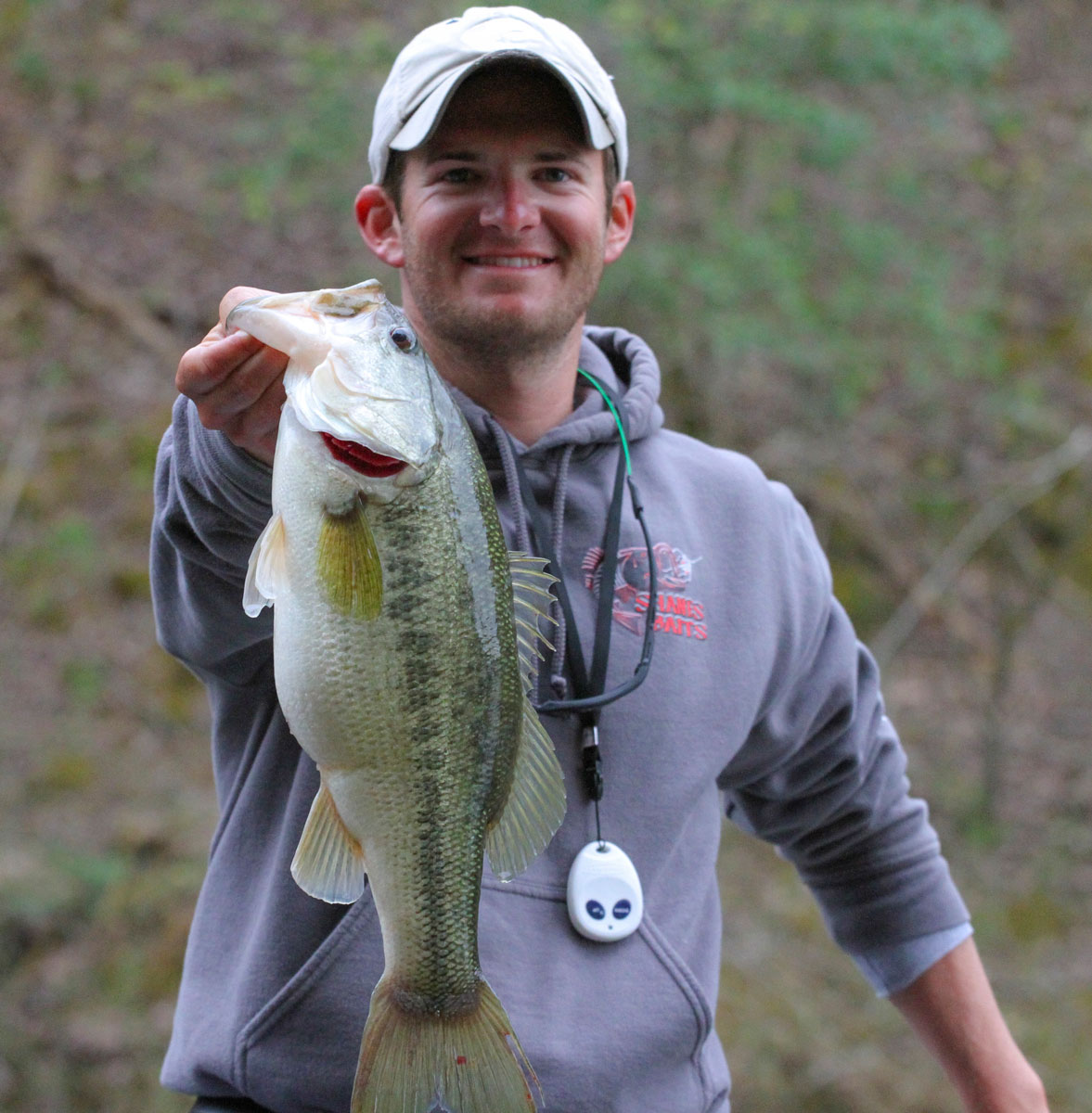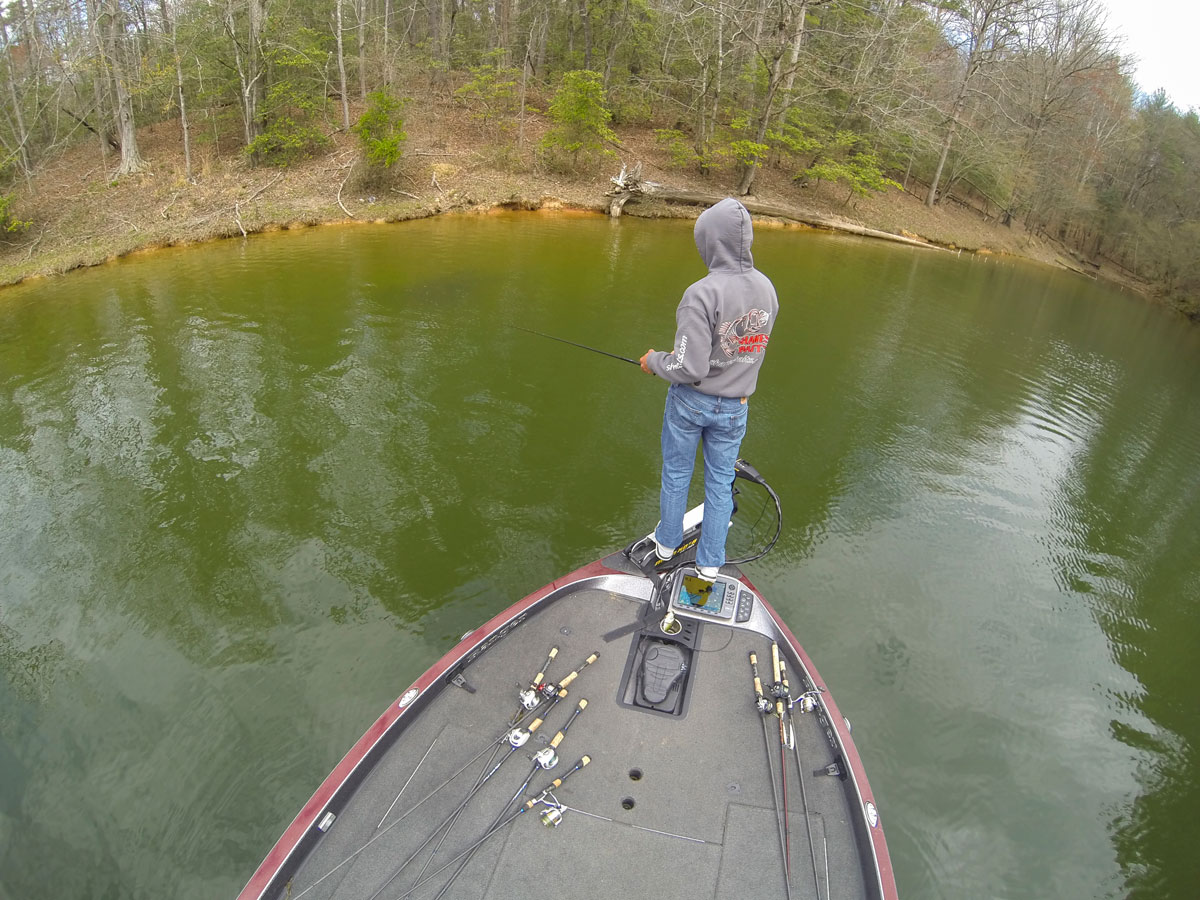
March begins spawning time for bass across the Carolinas; here’s how to target them.
Anglers see it, bass feel it and nature signals the change. The sun and warmer temperatures have arrived, and bass are headed to the shallows to begin their annual spawning ritual.
Not every bass in a given lake makes the move at the same time; instead, waves of bass will flood the shallows looking to make a bed and begin spawning.
In the Carolinas, spawning begins in some areas in March and lasts until May in others, but be ready anywhere, because if the water temperature is close to the mid-50s and the moon is almost full, the first spawners will be on the bank before you know it.
When it comes to bedding fish, bass pro Shane Lehew of Catawba, N.C., knows the ins and outs of catching spawners. He’s cut his teeth sight-fishing for bedding bass.
Approaching bedding fish can be tricky, because every fish acts differently, and some are further along in the process than others. According to Lehew, who also manufactures a number of different baits (www.shanesbaits.com), the only way to know how to approach a bed is to keep a watchful eye and maintain patience.
“Typically, if it is a tournament situation, I will stay way off of the fish and make my first cast with a wacky rig/trick worm- style bait like the Bizz Baits Dizzy Diamond,” Lehew said. “It is lightweight and doesn’t make much of a splash, so you don’t spook the fish. A lot of fish will actually rise up off of the bed and eat the worm while it’s falling.”
Lehew likes to use a 7-foot, medium-heavy Fitzgerald spinning rod mated to a reel spooled with 16-pound braid and a 6- to 8-pound fluorocarbon leader. He likes green pumpkin/candy for his bait, which is rigged weightless on a 1/0 Gamakatsu drop-shot hook.
Lehew can often tell very quickly if the fish will be easy to catch or a tricky battle. Some fish may be “locked” onto a bed — they won’t spook and leave — and are easier to target, while others can be much harder to entice to bite. There are a couple of subtle clues that will tell you if a fish can be caught.
“Usually, you can tell if the fish is going to bite fairly quickly. If you flip in the bed and the fish starts going out of the bed and making tight circles and comes back pretty quick, that fish is usually catchable,” Lehew said.
Those catchable fish are an easy target for anglers, but the finicky fish, depending on their size, may be worth the battle and wait.
“If you cast in the bed and the fish makes huge, wide circles or swims off the bed and sits a good distance away, that fish is probably not ready,” said Lehew. “If it is a fish that I think will really help me, then I will come back and check it just to see if it has locked down.”
Playing the waiting game can pay big dividends on a big bass, but if he’s fishing a tournament, he knows time is money, and leaving to return later may not be ideal. Lehew knows multiple factors contribute to a fish locking down on a bed much faster; he believes sunlight and timing are the biggest factors in targeting bed fish.

Aggression is also a factor in bed-fishing, because irritating a bass by keeping the bait in an undesirable area can ultimately annoy the bass into biting. Most times, the fish’s desire is to kill the intruder rather than eat it.
In that situation, Lehew will move to a soft-plastic bait that imitates a crawfish, like a green pumpkin Bizz Bug. He’ll fish it Texas-rigged on a heavy-action baitcasting rod with a fast-retrieve Shimano Chronarch reel spooled with 15- to 20-pound fluorocarbon. The fast-retrieve reel is important so he can winch bass out of cover to prevent damage to his line and get them in the boat sooner.
When Lehew backs his boat down the ramp and finds water temperatures close to the mid-50s, he knows spawning fish are a possibility. Lakes with warm-water discharges — like two he frequents: North Carolina’s Lake Norman and Lake Wylie on the North Carolina-South Carolina border — heat up faster than others, and he’ll look first in the areas affected by the discharges. Other than those areas, Lehew has some preferences when it comes to searching for those big females.
“Most people will head to the back of the coves, which are good places to look, but I have found that usually, the short pockets directly off of the main lake hold bigger fish, and I like to start looking right on the point,” Lehew said. “Some of the biggest fish I have caught have almost been considered main lake.”
When Lehew positions his boat to approach and cast to a bedding fish, he keeps the sun at his face so he doesn’t cast a shadow on the fish. That means good, polarized sunglasses so he can see into the water, despite the sun. He uses a handful of pairs from Costa Del Mar for different sun situations.
“I like to keep a few different lens colors in the boat with me,” he said. “My three must-haves are an amber lens, silver mirror and even a pair with the green mirror lens.”
Find a pair of sunglasses, get to looking at the shallows and be patient because around any corner a bass of a lifetime could be waiting in the shallows to be caught.



Be the first to comment